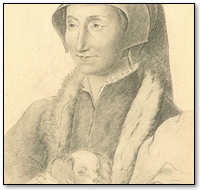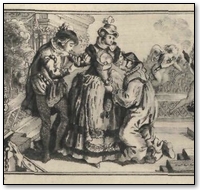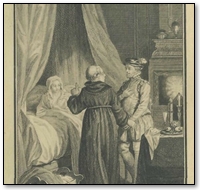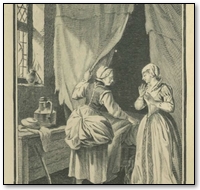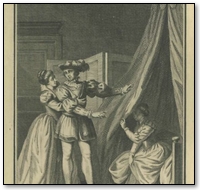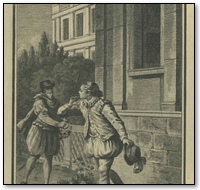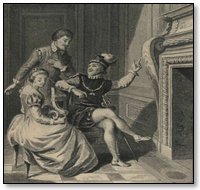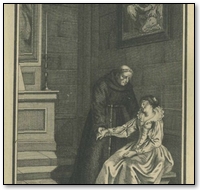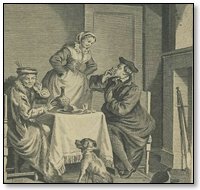Biography of Marguerite de Navarre, author of the Heptameron
Who was Margueritte de Navarre?
Margueritte de Navarre was a French noblewoman, author, patron of the arts, and Queen Consort of the King Henry II of Navarre. She lived from April 11, 1492 – December 21, 1549. Her brother Francis I was King of France and she exercised great power in France through him.
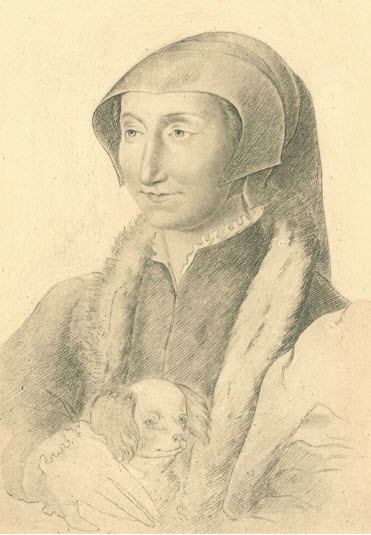
Marguerite de Navarre was a patron of many humanists, reformers and artists and writers. She befriended the great French author Rabelais, and welcomed Leonardo da Vinci to her court, where he lived until his death. Despite being a devout Catholic, Margueritte was tolerant of Protestants and often acted as mediator between the two factions, and convinced her brother not to take extreme repressive measures against the Calvinists and other Protestant sects within the Kingdom of Navarre.
Marguerite received an examplary education, and even learned Latin, which was unusual for women at the time. She was a towering figure in the French Renaissance, not only because of her patronage of the leading artists and writers, but also as an accomplished writer herself. Margueritte de Navarre wrote many plays and poems, but the she is chiefly remembered for her incomplete collection of tales, the Heptameron, which is reproduced here.
The Heptameron borrowed the structure of Boccaccio's Decameron and its name is an homage to the Italian work. Like the Decameron, the Heptameron concerns a group of people who tell each other stories over a number of days. The device of the storytellers serves as a theme connecting otherwise unconnected short stories. The name of the book Heptameron derives from the Greek words "seven" and "days" in reference to the fact that the stories are told over a period of seven days, and uses the same naming convention as the Decameron ("ten" and "days", which was told over a period of 10 days). However the Queen's original intention had apparently been to write 100 stories, told over 10 days, exactly as in the Decameron, but her work was unfinished when she died.
The Heptameron has gone through a number of editions and modifications, with subsequent editors taking great liberties in rearranging the order of the stories and even altering large portions of the text.
Pierre Bayle (1647-1706), the French philosopher and critic, lauded the Queen for her tolerance and humanism: "... for a queen to grant her protection to people persecuted for opinions which she believes to be false; to open a sanctuary to them; to preserve them from the flames prepared for them; to furnish them with a subsistence; liberally to relieve the troubles and inconveniences of their exile, is an heroic magnanimity which has hardly any precedent ..."
Online Edition of the Heptameron
This is the Heptameron of Marguerite de Navarre
Other Sites: CruikshankArt.com · Dante's Inferno · Book-Lover.com · Canterbury Tales ·
This site is created by the Heptameron Information Society.


